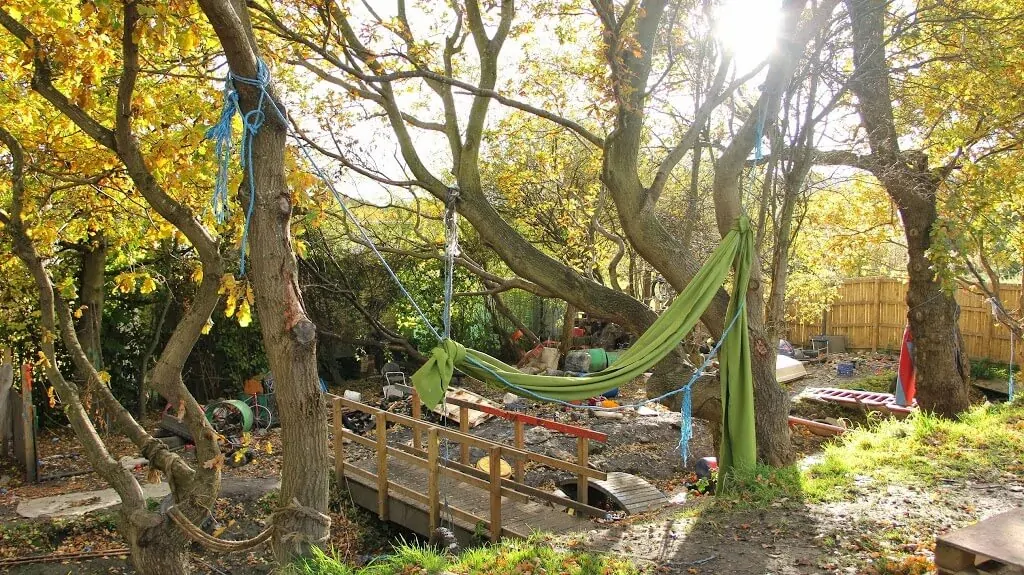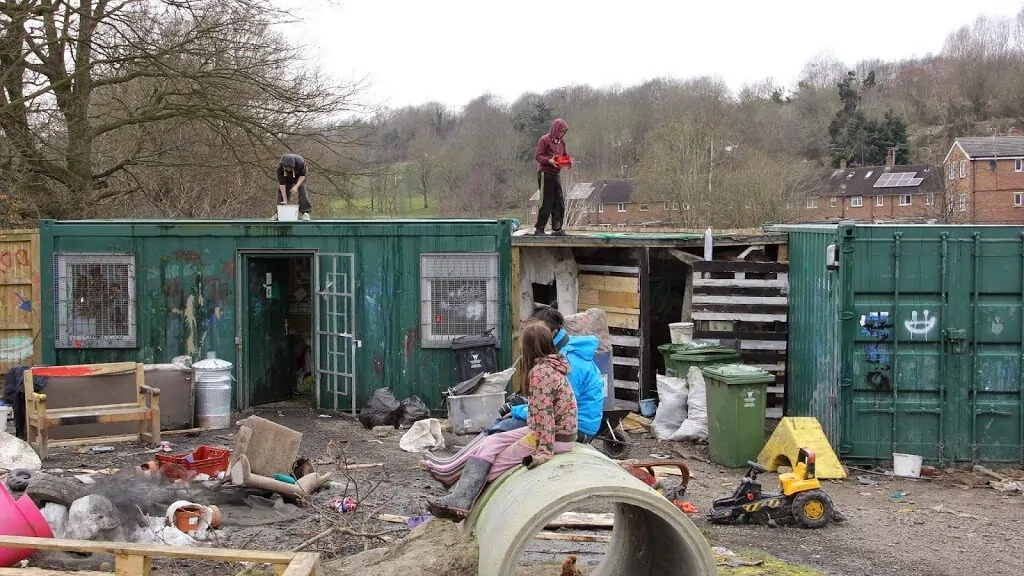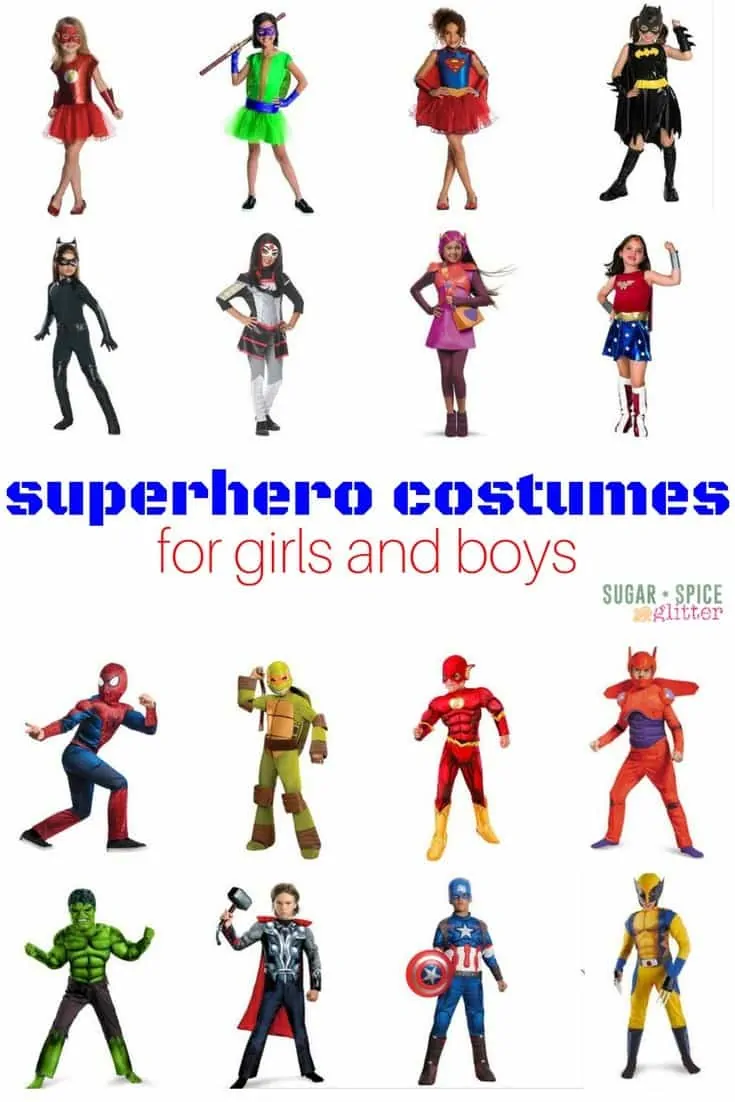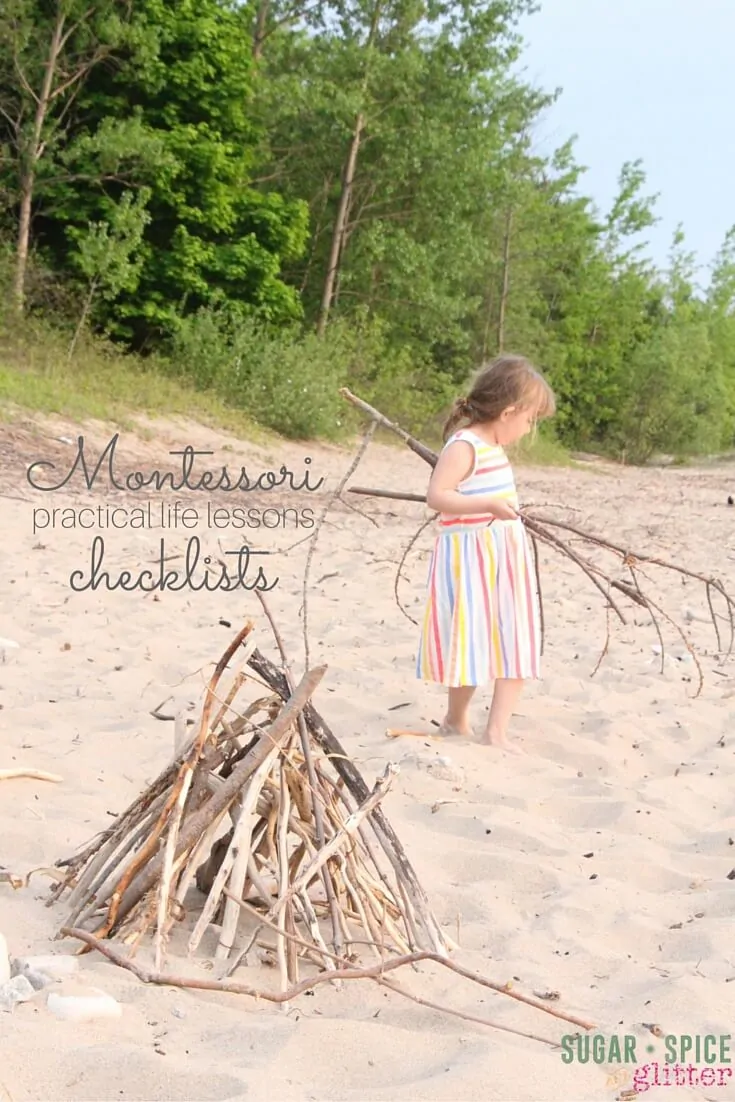The Land: Adventure Playground
 |
| Image of The Land Provided by Erin Davis |
A few weeks ago, I linked up to the Atlantic’s story on The Land “adventure playground,” which has since received a lot of social media exposure so I wanted to start a conversation about the implications of risk and free-range parenthood that is so much more than a single post could do justice.
A fellow mother posted a picture of “The Land” playground to Facebook recently, with no context or links. Every single commenter was shocked at the apparently dangerous and unsanitary nature of the “adventure playground,” and I’ll admit, I was given to thoughts of tetanus and injury, but then again, when I was young I owned a gerbil and now all I think when I look at them is “rodents and teeth.” Its funny how our age changes our perspective — its surely not experience that has changed things, as I’ve never been bitten by a rodent, and I’ve never broken a bone or needed a tetanus shot despite my own childhood adventures.
If you’ve got a good amount of time, I’d highly recommend reading the article (or watching the documentary, coming soon),but if you’ve seen any of the pictures, you’ll easily understand: the Land is an “adventure park” of repurposed items that looks similar to a junk yard, but has the unique advantage of being equipped with “play workers” to watch and intervene only if the children are engaging in truly dangerous play. (Starting a fire in one of the metal barrels is not considered intervention-worthy.)
While I disagree with some parts of the execution of the park, there are many aspects of its spirit that I admire. I do fear that the people who romanticize notions of truly free-range childhoods forget Lord of the Flies-style hierarchies and cliques, uncomfortable secrets, and arbitrarily dismiss the injuries and losses suffered by children and families as a result of such adventures (not as high as some would claim, but very real losses for the families affected). But in the other camp, I think many of the people who are abhorred at the ideas ingrained in the Land doubt children’s capacities and abilities to learn natural consequences, and are driven by a good amount of fear. (I get that. After all, as JFK said, “to have a child is to give fate a hostage.”)
Many international tourist attractions, such as the Irish Blarney Stone, have had to make serious changes to how they are set-up because of tourists who are used to uber-safe conditions at home that don’t require personal discretion or responsibility regarding one’s own safety. While, of course, we want to trust that the park equipment that our children are playing on is safe, we also need to give children opportunities to engage in personal discretion and judgment. Because children will crave and encounter real risk at some point in their lives, and the deprivation of it in their childhood can lead to some scary issues in their teen and young adult years. The difference we see and the reason why its important to engage in age-appropriate risk at a young age is that the risks we see over-protected adolescents and teenagers taking are emotional risks and risks that involve drugs, alcohol, and vehicles.
 |
| Image of The Land provided by Erin Davis |
Risk also allows for rapid brain development. Children “think on their feet” and process information quicker in these seemingly risky scenarios, which contributes to a whole brain development. Children who don’t engage in these types of “risky play” scenarios are not privy to the neurological maturation that these children experience. Children also get immediate, natural feedback in these scenarios which they can personally understand and interpret, unlike many of our contrived social situations that children can feel lost within. Teenagers who have been raised with trust and empowered to engage in risky play as children will have more neurological advantages than sheltered children when it comes to self-regulation and attraction to risky behaviours.
By allowing a child to engage in risk, you’re not creating an “adrenaline junkie,” you’re allowing them to satiate a need and develop discretion and confidence that will serve them well as they grow older. I want my daughter to grow up believing that she is confident and capable, and experiencing true exhilaration through what I deem “safe risks.” After inevitable injuries or scares we talk about our choices and what we’ve learned; and sometimes, that means she experiences the injury or scare over and over again until she figures it out. Her emotional world is safe and she has a strong launchpad to return to if ever a risk is deemed too much, and I’m trying my best to encourage her self-regulation and the learning curve that accompanies that. It’s hard.
A friend once said to me, “Couch potatoes don’t get injuries,” and there’s also Lady Allen’s quote, “Better a broken bone than a broken spirit.” I try to remind myself of what my greater goals are when I allow my daughter to make her own decisions and take risks. I want her to be a motivated individual who has self-confidence and satisfaction; that necessitates giving her opportunities to develop and test out those things.
What are your thoughts on adventure playgrounds and allowing your child to experience risks?





We’re all on board with this approach. I grew up with belief from my parents – “go outside and play, come home for lunch, and come in when it’s dark”. Don’t do something that we might get really hurt, and don’t go along with the crowd if you really don’t want to. We had a general explanation of “bad people” and were told to listen to our ‘guts’ if something didn’t feel right. I did grow up in a rural area, so that helped to facilitate that freedom, so urban settings are different.
Thank you so much for your thoughts, Pam.
I like how you balanced your own opinions with facts and explained the psychology of risk taking and decision making in childhood and adolescence. It’s a very thorough, engaging piece! I guess I’d be curious about whether or not there are different age appropriate spaces. I can see how for 10-15 year olds, for example, making a fire in a metal barrel (with supervision and help available if needed) could be a fun, adventurous, risky activity that could satiate a child’s curiosity about fire in a controlled environment and be a practical learning opportunity when it comes to fire safety (using this example though I’m still not 100% comfortable with this particular “exploration option”, lol). But, if there are 5-year-olds on that same playground, that’s a different story. What constitutes an exhilarating adventure for a 12 year old could be life-threatening to a 4 year old.
I also think there’s a big difference between opportunities to explore, take risks and solve problems and blatant dangers. Sharp or rusted objects and materials to make fire, for example, constitute more of a danger in my mind than they do an acceptable form of exploration play. There is a reason children don’t play in junk yards, and while there’s a serious epidemic of over-protective parents who want to cushion and polish and control their child’s ever experience, I think to go to the complete opposite extreme is just as unfair to them. As you mentioned, while these types of injuries and deaths are not overly common, those losses are very real to those who experience them.
Another thought, as an ECE, some children come from very disturbing backgrounds and want to reenact violence and abuse in their play. This is a very real thing, and I have seen it first hand many, many times. I’ve had a child tell me they would burn the whole school down so we could all die… would I want that child to have access to fire making materials as play? No way. I’ve had a child try to hurt someone with dull child scissors and try reenact scenes from CSI. Would I want that child to have access to sharp objects? No way. So again… this idea is all great in theory. But in practice, there are many, many factors to be taken into consideration. I think at the end of the day, I’d pass and take my child exploring in the woods, like I already do…
So, I guess in theory I’m all for the idea of exploration based play, allowing my child to take age appropriate risks and problem solve on her own while engaging creatively and physically (climbing, jumping, etc.) with natural and repurposed materials (instead of a big plastic primary-coloured park climber that tends to dictate the type of play that is expected). BUT, in practice, I’m guessing I’d probably oppose some aspects of The Land’s design. (I still have to read the original article though, so this is an assumption).
Your insights are so valuable – thank you for sharing them 🙂
The adventure playground looks interesting and fun for the 6 + age group. I agree with you that children should take some risks, and overcome their fears. Some children are natural risk takers and others are more cautious. As a parent I like to encourage them to try new things as they grow, and realize they can climb a bit higher and come back down safely. My son has climbed the high ropes at a camp and I was surprised at how young some of the kids were. They were harnessed in and they seem to have fun. He also loves water slides, and has since he was around 4 years old.
I totally agree – sometimes it’s hard to realize that just because our own children might not be ready/old enough/that type of personality, other children can benefit.
This sounds amazing! I wish we had something like this in our area.
Thanks for stopping by, Jennifer!
This is a beautiful and thought out review of the Adventure Playground. I have never heard of such a thing! My mind is full of thoughts. I am contemplating the positives and negatives of allowing our children to be exposed to such risks.
I would love to hear your thoughts!
Interesting! I hadn’t heard of this yet. I can understand the initial shock, looking at the area, and seeing it essentially as a glorified dump. But I certainly appreciate and agree with the reason for the park. I’d like to think I’d allow my DD to explore and be a risk taker! It would take some getting used to playing at a spot like this, however. For the parent, that is! 🙂
Yup – definitely takes us more adjusting than it would them!
I think that age-appropriateness is the most important question to ask when it comes to considering this sort of play environment. (I recognize that you wrote the post a while ago and may have already conducted the interview!)
I grew up in a tiny town on a street with six neighbours and several acres of land between those neighbors. There were forests, creeks, railroad tracks and poison ivy, among other dangers! My immediate next door neighbor had a loud bell that she rang at dinner time as the signal to the entire gaggle of neighborhood kids that it was time to go home for the evening. We rode our bikes up and down the street, we spent time at each others’ homes without necessarily telling our parents first . . . the caveat is that we started this sort of behavior around the age of six. There were kids ten years older than us who would sometimes participate, most often not.
The point is that we have to be careful about how much “freedom” we give our very young children, because they just aren’t emotionally or physically ready for it. I’d be willing to bet that The Land is not “open” to very young children, whether their parents are comfortable with their attendance or not. Fire and water are concerns for children under the age of six or so and rightfully so!
I currently live on a court in Ontario with ten houses. Half of those houses are inhabited by retirees who are frequently looking out their windows and keeping an eye on things. The other half of those houses are filled with young families or University aged students. My nearly-five year old son frequently asks if he can “go play in the court” which means BY HIMSELF! Last summer, I let him go as long as I was able to sit on the front porch and watch from a distance. This year? He goes by himself and I’m inside. We’ve discussed the importance to look out for and listen for cars (there is one house with fast drivers). Additionally, he knows how to identify poison ivy and is aware that he shouldn’t eat any berries that he sees!
He built the confidence to go to the court alone on his own, at his speed. I didn’t push him out there, but I also didn’t hold him back. We’re in the process of fencing our yard and creating a sort of Land for our little guy to safely explore things like building, climbing trees, water and fire. We decided to do this after my husband read and shared the article from The Atlantic.
We’ve decided not to include old mattresses or rusty nails, but otherwise we’re planning to let our little explorer decide how he wants to use the space.
I can’t wait to read what you learn from the film maker!
I LOVE YOUR THOUGHTS! It’s so cool hearing from a parent who’s actually tried this 🙂
I like the idea, but I tend to wonder about the safety of it all. How can you make it safe for the under 5 crowd?
I don’t think that everything “for kids” has to work “for all ages.”
My gut reaction is, “Gah, how ugly. Where is the order?”
But I like the concept. I let me 3yr old poke around in our fire pit and while I don’t hand him matches, he is allowed to start sticks he’s holding on fire and roast his own marshmallows. Never out of site (or reach) during this exploration. Hammering and building with real materials is certainly in the Montessori vision. I am very interested in seeing this film now!
LOVE having a Montessorian weigh in!